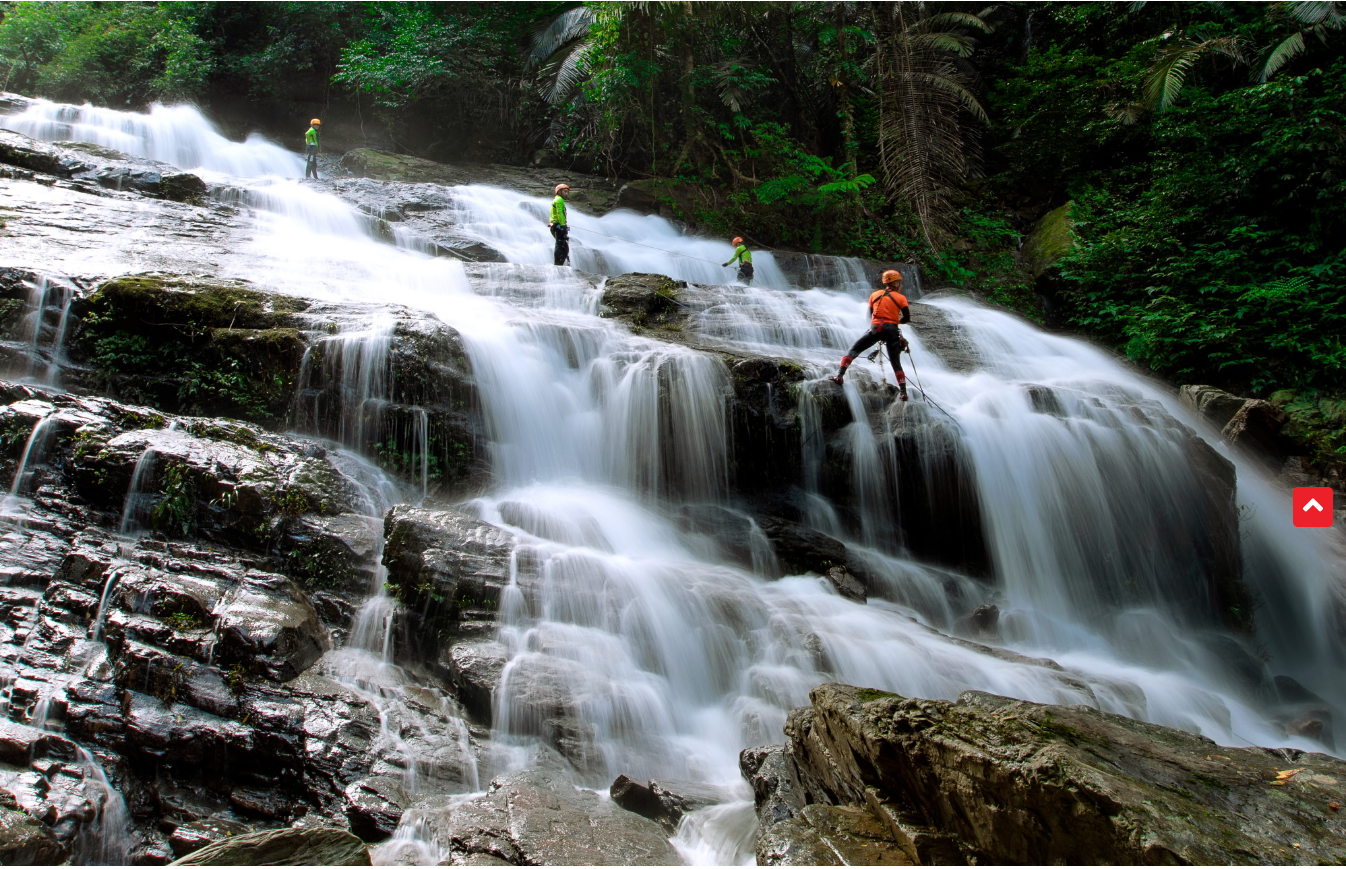
The Land of Magical Waterfalls
If the Phong Nha-Ke Bang National Park in northwest Quang Binh is known as the "Cave Kingdom," the Dong Chau-Khe Nuoc Trong Nature Reserve in southwest Quang Binh is known as the "Land of Waterfalls."
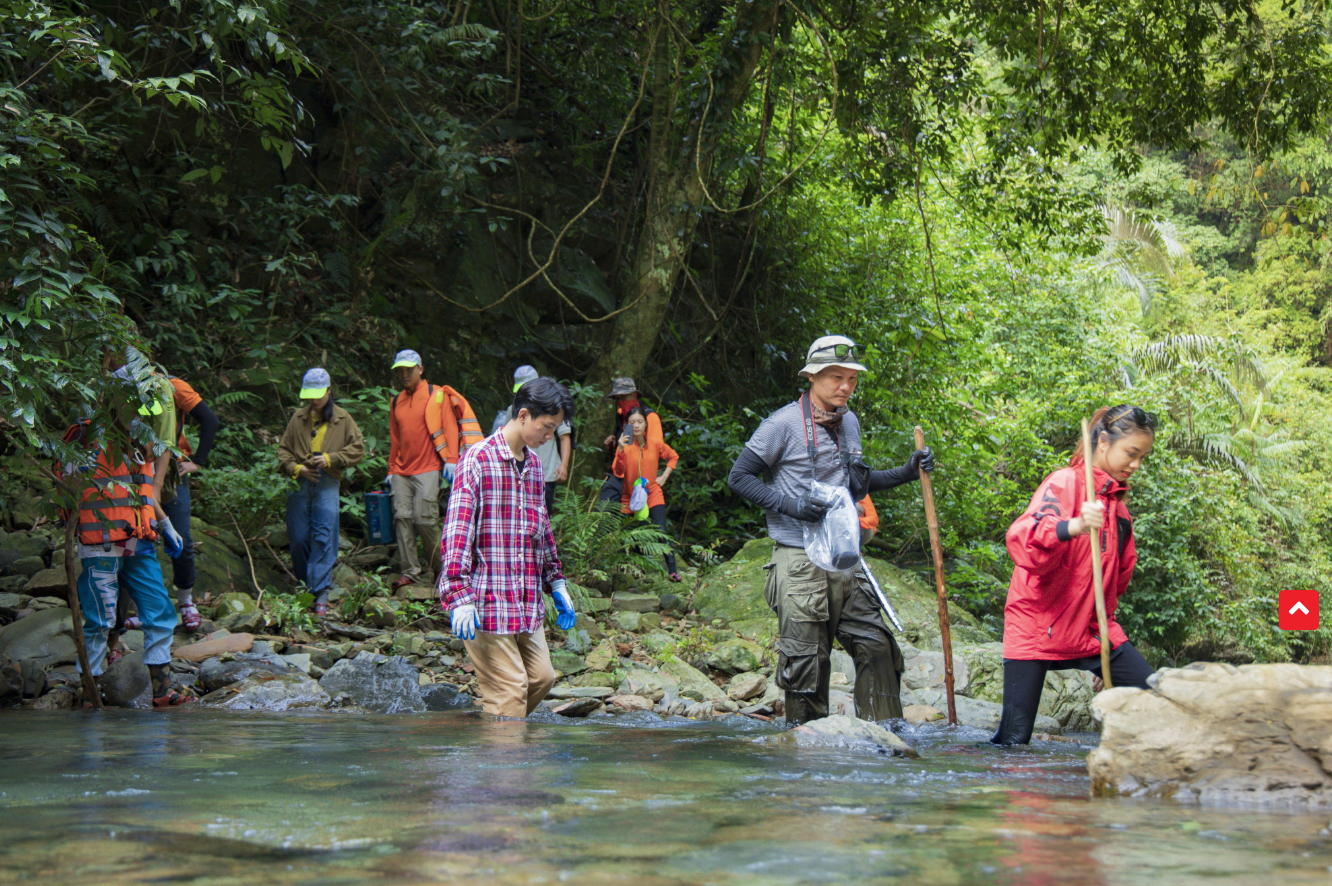 Nobody knows how many waterfalls there are in this 22,000-hectare forest. Suoi Tien alone has ten large and small waterfalls along its 6km length. Each waterfall varies in height but is stunning amidst the unspoiled mountain scenery.
Nobody knows how many waterfalls there are in this 22,000-hectare forest. Suoi Tien alone has ten large and small waterfalls along its 6km length. Each waterfall varies in height but is stunning amidst the unspoiled mountain scenery.
We arrived at Suoi Tien after more than 30 minutes of walking, weaving under the canopy of the ancient forest, and listening to birds singing, leaves ringing, and strange animal sounds. The stream is unremarkable without a white, silky waterfall that loosens its hair. According to legend, the villagers used to call the waterfall "Silver Hair," but later changed it to "Fairy Hair." The first visitors to this location are always "Fairy hair," not necessarily "Mr. Fairy's hair."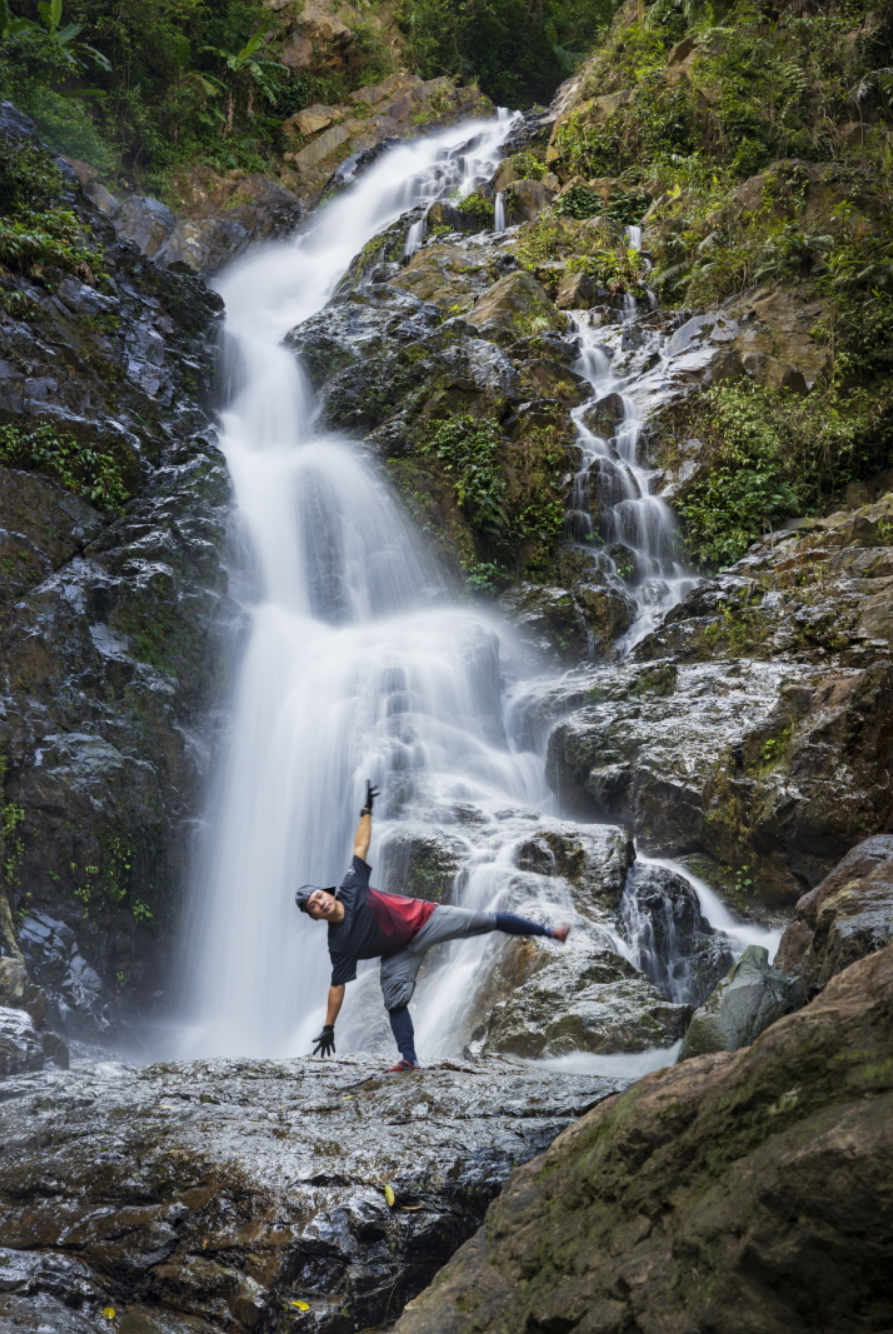 Fairy Hair Waterfall is located on a cliff and is surrounded by two "arms" trees, making it romantic and poetic. The lake beneath Fairy Hair Waterfall is so clear that pebbles of various sizes and colors, as well as small schools of fish, can be seen.
Fairy Hair Waterfall is located on a cliff and is surrounded by two "arms" trees, making it romantic and poetic. The lake beneath Fairy Hair Waterfall is so clear that pebbles of various sizes and colors, as well as small schools of fish, can be seen.
We were told by Fairy Hair that we would continue our journey by following the stream bank. People are only allowed to bring a smartphone to take photos, in addition to quick-drying suits, helmets, gloves, and slippers. Porters will transport all luggage to its final destination.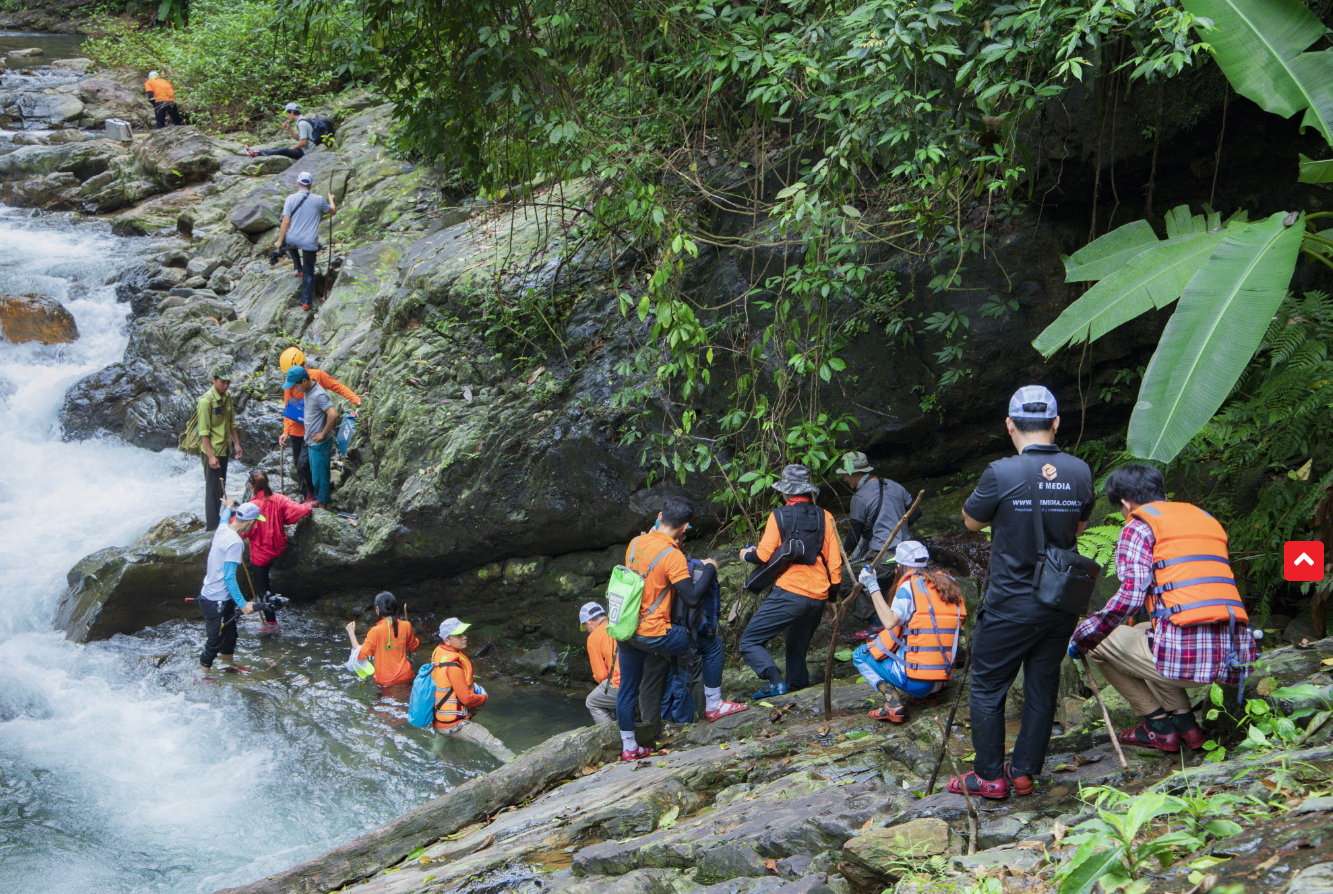 The phone was the only thing bothering me as I passed through the third waterfall. To overcome the rocky slopes when standing up, when slippery, when sharp, you must employ all defense education postures: rolling, dragging, crawling, clinging, clinging, pulling... The slips are also too "spectacular": when the waves are in the stream and being thrown up and down, the buttocks and back continue to kick unexpectedly and painfully. However, everyone is excited because the journey ahead promises many exciting things.
The phone was the only thing bothering me as I passed through the third waterfall. To overcome the rocky slopes when standing up, when slippery, when sharp, you must employ all defense education postures: rolling, dragging, crawling, clinging, clinging, pulling... The slips are also too "spectacular": when the waves are in the stream and being thrown up and down, the buttocks and back continue to kick unexpectedly and painfully. However, everyone is excited because the journey ahead promises many exciting things.
Wading through the stream, feeling like the rain had just passed, I stopped and looked up. From the rocky shore, thousands of jets of water weave magically in the sun. A rain screen is never seen before. Under the rain was a perfectly arranged miniature: Trees with rocks whispering in the rain, streams flowing around and cheering with the wind. I stood there for a long time, letting the magical rain of cool rock seep into my flesh, my heart rising with joy like the day she showered on my porch.
We arrived at the most talked-about waterfall on the trip after wading a few more sections of the stream. From above, the waterfall appears to be a piano with white keys and a flowing sound. Duong Piano Waterfall, which is 50m high and slopes about 70 degrees, is one of Chau-Khe Nuoc Trong Cave's most beautiful waterfalls.
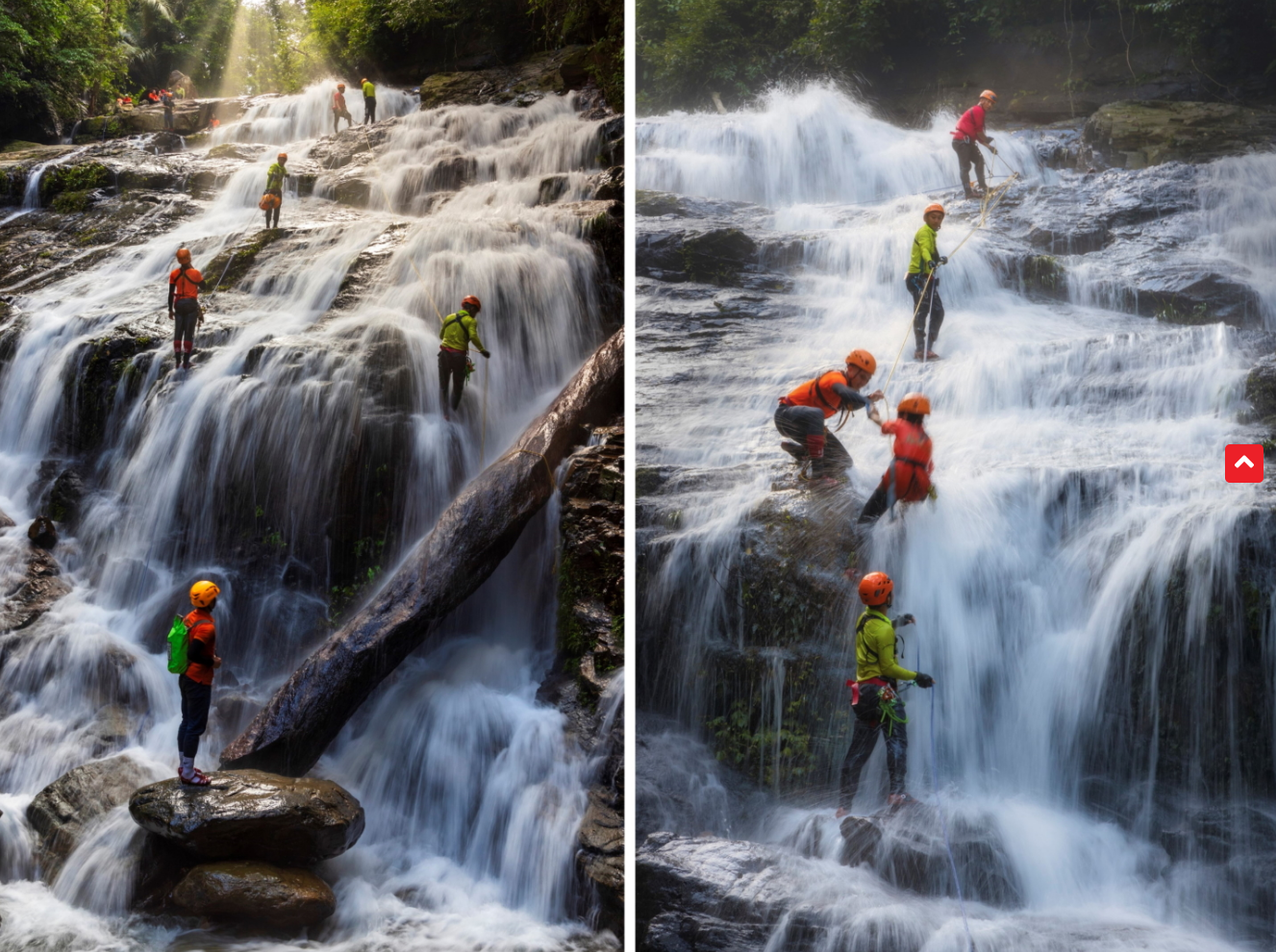 To pass this waterfall, the experiencer must wear a protective belt that connects two ropes, one supported by two winch operators from the top of the waterfall and one rope that the passer must grasp and actively climb using strong pulling force with both hands.
To pass this waterfall, the experiencer must wear a protective belt that connects two ropes, one supported by two winch operators from the top of the waterfall and one rope that the passer must grasp and actively climb using strong pulling force with both hands.
After only a few stone steps, I noticed that the water from the waterfall was becoming increasingly powerful, the rocks were slippery, and it was difficult to find a place to cling. That is why Netin Travel Company's guides are true artists. Their orange-robed silhouettes moved flexibly and gracefully over the white foaming waterfall without the ropes.
 We arrived at the campsite after crossing Thác Dương Cầm (The Piano Falls) and wading a short distance. It was a tall and relatively flat rock near the edge of the forest, next to the stream.
We arrived at the campsite after crossing Thác Dương Cầm (The Piano Falls) and wading a short distance. It was a tall and relatively flat rock near the edge of the forest, next to the stream.
The afternoon sun added a few puffs of smoke from the newly rekindled fire to the forest scene, making it more peaceful and cozy. Birds, frogs, and streams could be heard from afar. Dinner in the middle of the forest includes snails, rub (stone crab) caught under the slot, and a bowl of begonia leaves soup cooked with sweet and sour spring fish.
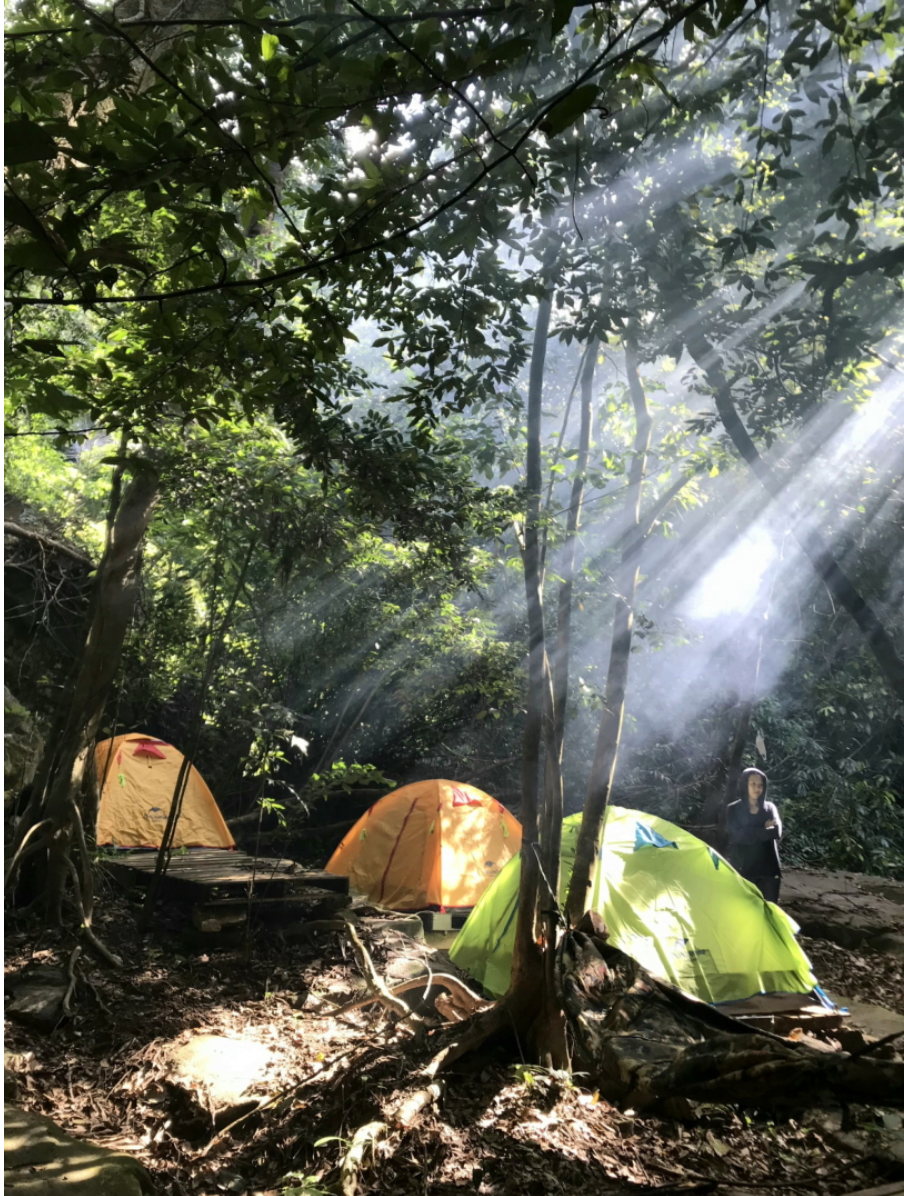 We heard the forest guards tell stories of the monkeys and langurs who used to tease the dogs at the Monkey Bridge Forest Protection station at night, in the moonlight through the sky, by the fire from the boiling pot of water; the placement of photo traps to detect animals recorded in the Red Book of Vietnam and the World such as saola, gaur, Truong Son gill, pheasant, pheasant...
We heard the forest guards tell stories of the monkeys and langurs who used to tease the dogs at the Monkey Bridge Forest Protection station at night, in the moonlight through the sky, by the fire from the boiling pot of water; the placement of photo traps to detect animals recorded in the Red Book of Vietnam and the World such as saola, gaur, Truong Son gill, pheasant, pheasant...
There are also numerous medicinal plants and valuable trees in the forest, including honey mahogany, mop mahogany, lim xanh, and incense. The forest here is an evergreen rainforest, a rare type of forest still found in Vietnam, and it is rich in flora and fauna.
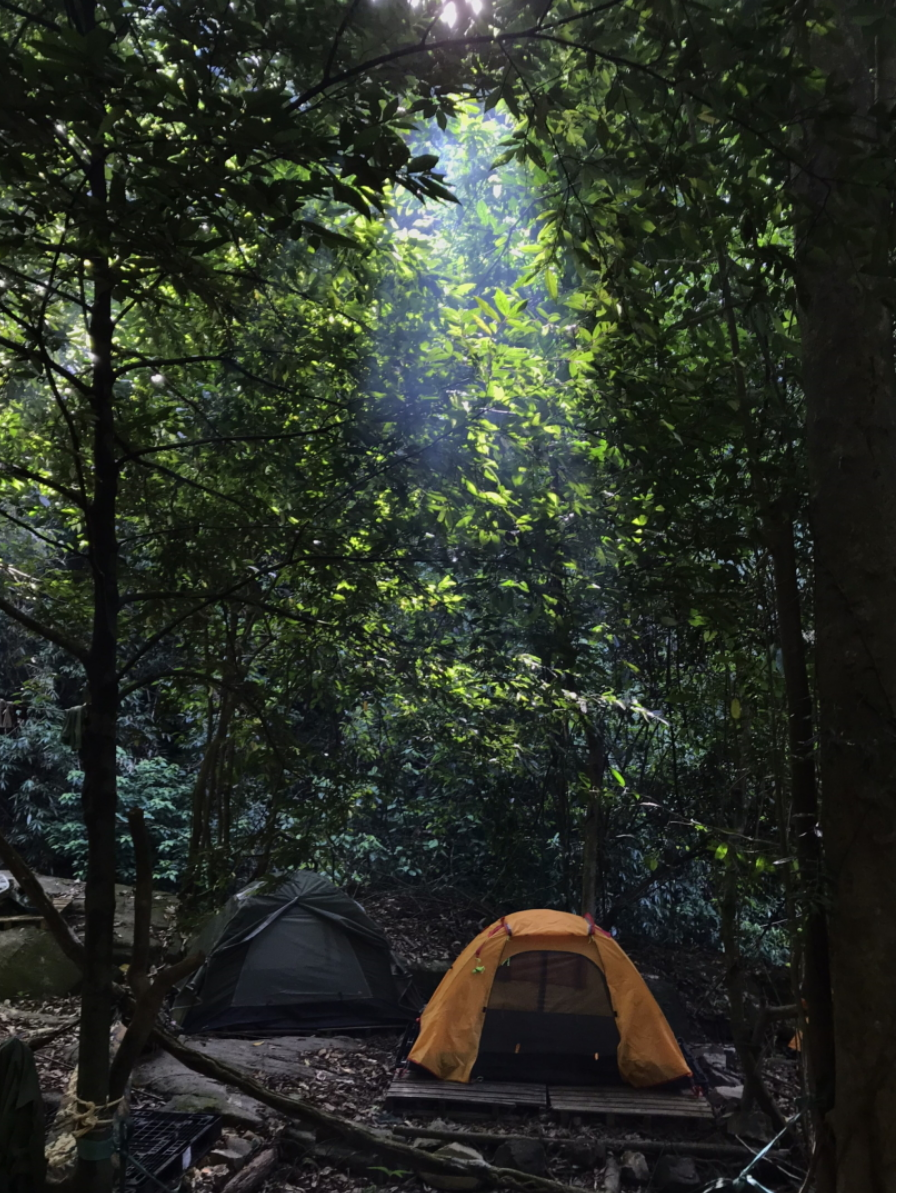 From the time of the war until now, generations of Quang Binh people have protected this forest. Cultural and historical values such as Bai Bullet, Bru-Van Kieu villages such as The Regiment village, and the legendary Truong Son road through the forest attract visitors when they come here...
From the time of the war until now, generations of Quang Binh people have protected this forest. Cultural and historical values such as Bai Bullet, Bru-Van Kieu villages such as The Regiment village, and the legendary Truong Son road through the forest attract visitors when they come here...
 The sensation of waking up in the mountains and forests for the first time is indescribable. The stream was calm and rattling, not rumbling like it had been yesterday afternoon; the sound of birds and leaves was also quieter. Sitting quietly, feeling like many melancholy, my heart's sorrows melted with the wind, and my breath merged with nature.
The sensation of waking up in the mountains and forests for the first time is indescribable. The stream was calm and rattling, not rumbling like it had been yesterday afternoon; the sound of birds and leaves was also quieter. Sitting quietly, feeling like many melancholy, my heart's sorrows melted with the wind, and my breath merged with nature.
The Heaven's Gate waterfall was the final challenge on our journey. This is Tien Stream's longest and tallest waterfall (about 120m). Looking up from the waterfall's base, Heaven's Gate is tall.
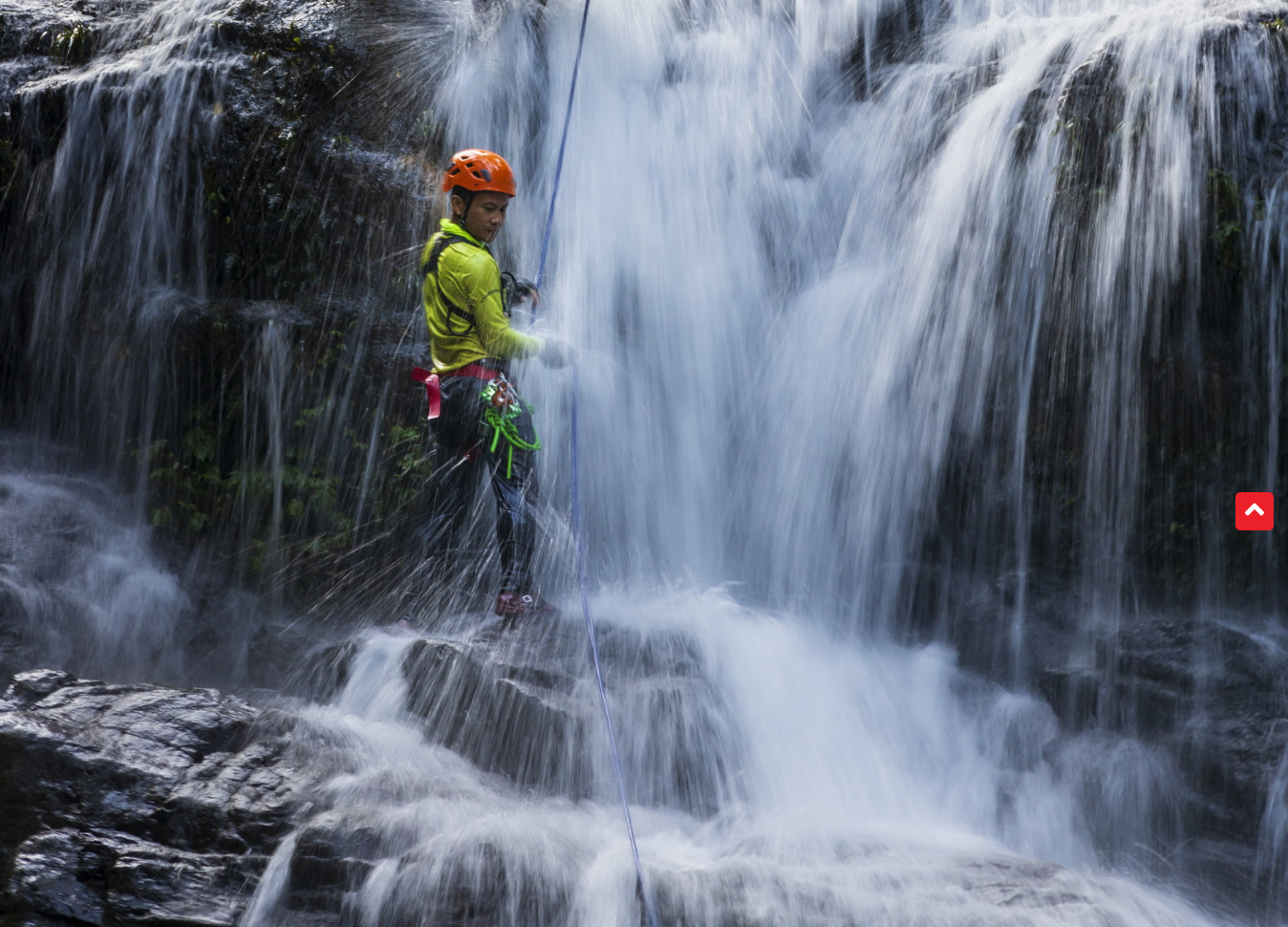 To get to the top of the waterfall, you must climb steep rocky slopes. There are sections that require crossing the forest and climbing the cliffs. The Sky Gate Waterfall is magnificent; the water from above cascades down white like a silk strip, winding among the green mountains and forests. There are a lot of old trees in this forest. The presence of an entire forest of woody ferns attests to the long-standing formation of this pristine, ancient beauty.
To get to the top of the waterfall, you must climb steep rocky slopes. There are sections that require crossing the forest and climbing the cliffs. The Sky Gate Waterfall is magnificent; the water from above cascades down white like a silk strip, winding among the green mountains and forests. There are a lot of old trees in this forest. The presence of an entire forest of woody ferns attests to the long-standing formation of this pristine, ancient beauty.
Sky Gate Waterfall has a cool, pleasant midsummer climate with temperatures ranging from 22 to 240 degrees Celsius. Quang Binh is aiming for an ideal location for the ecotourism and resort tourism industries.
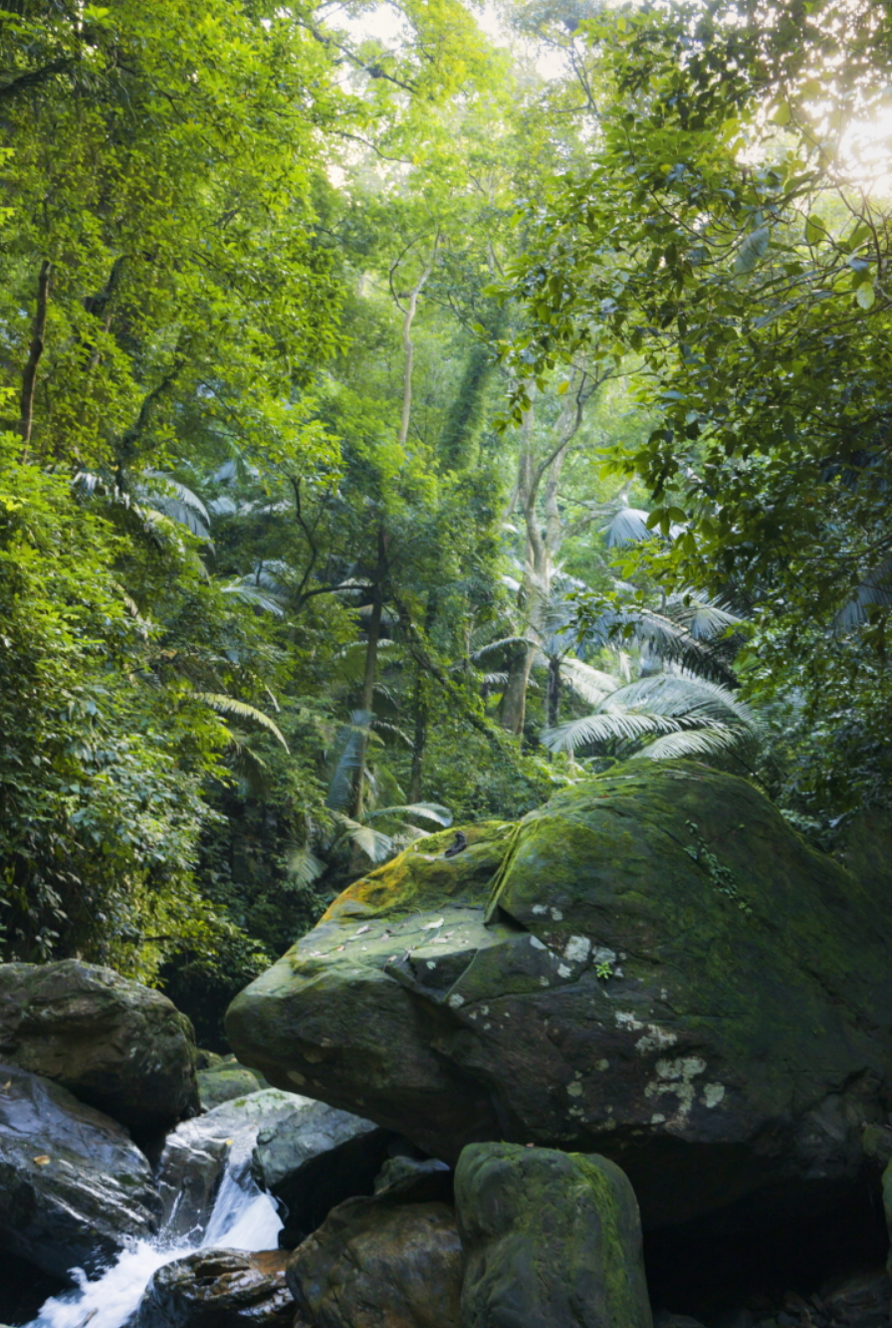 Dong Chau-Khe Nuoc Trong Forest also serves as the source of two major rivers, Dai Giang (Long Dai) and Kien Giang, both of which are tributaries of the Nhat Le River. Hundreds of streams pouring in from this location have nourished the rich rivers and villages downstream.
Dong Chau-Khe Nuoc Trong Forest also serves as the source of two major rivers, Dai Giang (Long Dai) and Kien Giang, both of which are tributaries of the Nhat Le River. Hundreds of streams pouring in from this location have nourished the rich rivers and villages downstream.
We completed the journey by swimming through a fairly deep lake and down a steep slope to the other side of the mountain. A return journey.
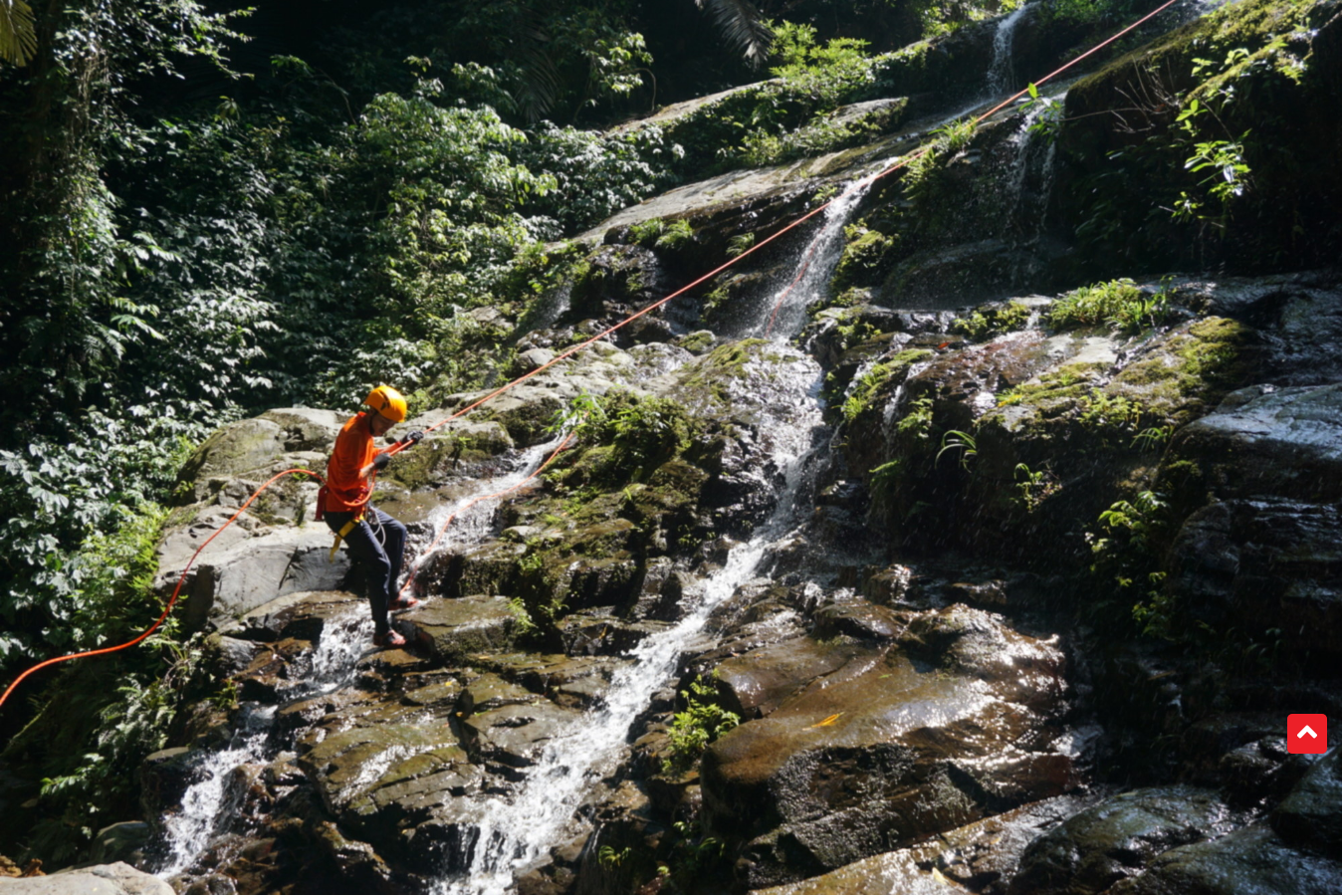 The sensation of "landing" is satisfaction from conquering oneself, not the waterfalls.
The sensation of "landing" is satisfaction from conquering oneself, not the waterfalls.
The World Wide Fund for Nature (WWF) identified Dong Chau-Khe Nuoc Trong as one of 200 centers with high biodiversity worldwide, and BirdLife International identified it as one of Vietnam's 62 important and endemic bird regions.
Dong Chau-Khe Nuoc Trong has a forest cover of more than 98%, with more than 50% of the protected evergreen closed forest (more than 14 thousand hectares) remaining almost intact. This type of forest has high biodiversity and is extremely rare in Vietnam.
Source: Trần Hồng Hiếu (Photo: Netin Travel)